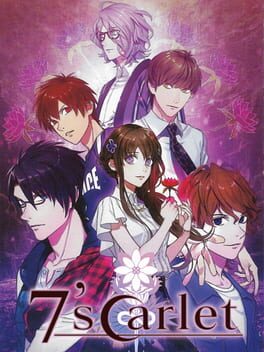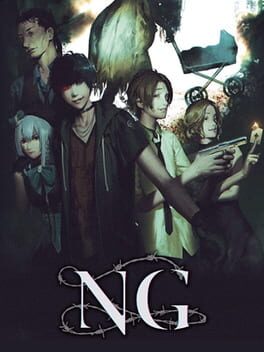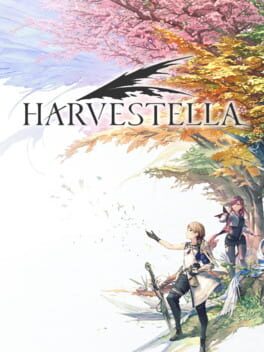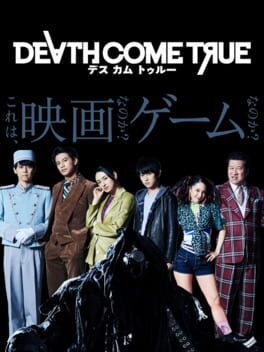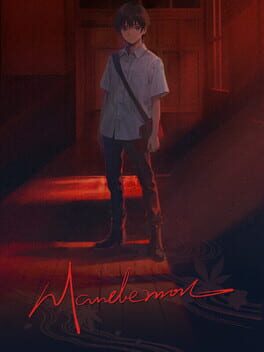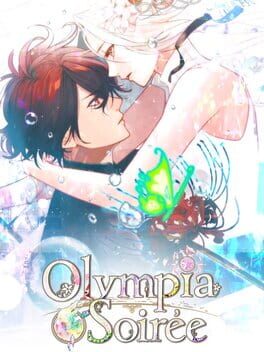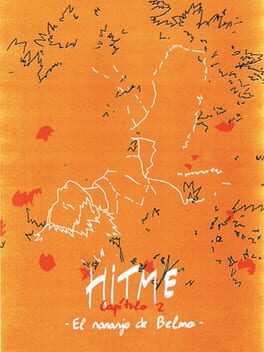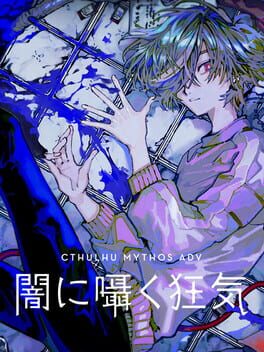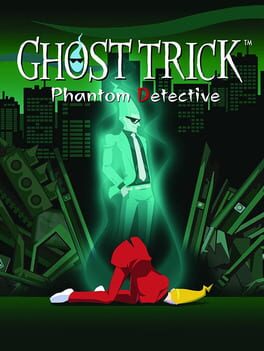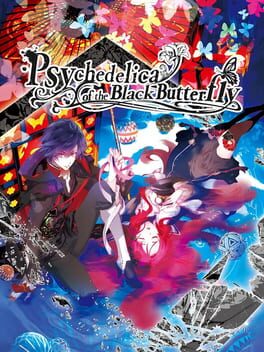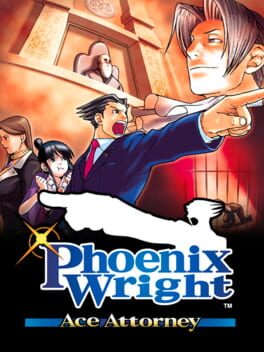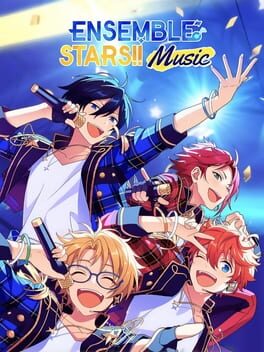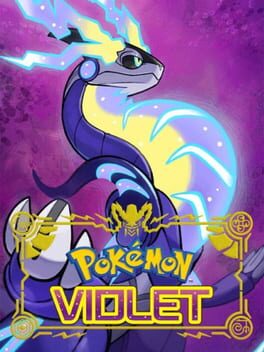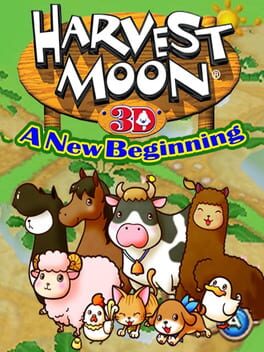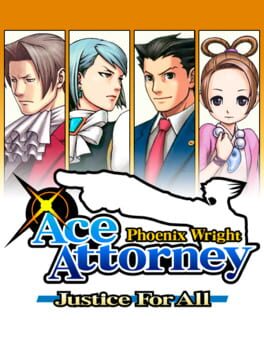almorica
2016
7'scarlet shows its age as an Otomate release in both features and structure. It's missing what is now the standard (like a flowchart, affection-up indicators, and skip-to-choice), and the strange way later endings are unlocked and accessed certainly is an experience because of it. It's also really bad at foreshadowing; after playing Virche Evermore and seeing good examples of this, playing 7'scarlet a second time while knowing everything really has no particularly satisfying payoff.
I really like this game, though. It's partially horror and involves some instances of blood, violence and death, but it's one of the coziest games I own. The soundtrack and backgrounds are so comfortable and relaxing the majority of the time. I may not be completely sold on much of the romantic content, but I am sold on the protagonist — with a beautiful design and convincing big puppy dog eyes, I can imagine why these guys would fall for her. It was nice seeing her, Yua, Yuzuki, and Okunezato again!
Anyway, I'm glad this game ends after Yuzuki's endings and there's no secret route whatsoever❤️
I really like this game, though. It's partially horror and involves some instances of blood, violence and death, but it's one of the coziest games I own. The soundtrack and backgrounds are so comfortable and relaxing the majority of the time. I may not be completely sold on much of the romantic content, but I am sold on the protagonist — with a beautiful design and convincing big puppy dog eyes, I can imagine why these guys would fall for her. It was nice seeing her, Yua, Yuzuki, and Okunezato again!
Anyway, I'm glad this game ends after Yuzuki's endings and there's no secret route whatsoever❤️
2018
A more streamlined sequel to Death Mark, NG is cozier by virtue of the protagonist having friends and family that get some, or significant, development and screentime. That's both to its benefit (character depth and strength) and detriment (less intense horror atmosphere).
I recommend starting with Death Mark if you just want to be scared, and can tolerate it being horny about [mostly] female bodies in those scary situations. I recommend skipping to NG if you want a horror point-and-click VN with much less of that!
Note: the Switch version is a noticeably slower gameplay experience than it was on my Vita, and is limited to four save files. I also experienced a couple of strange glitches that weren't in my Vita playthroughs. I have to say I prefer the game's performance on Vita.
I recommend starting with Death Mark if you just want to be scared, and can tolerate it being horny about [mostly] female bodies in those scary situations. I recommend skipping to NG if you want a horror point-and-click VN with much less of that!
Note: the Switch version is a noticeably slower gameplay experience than it was on my Vita, and is limited to four save files. I also experienced a couple of strange glitches that weren't in my Vita playthroughs. I have to say I prefer the game's performance on Vita.
2022
Boy, is it ever nice to be gay AND nonbinary AND treated like that’s no big deal!!
Farming starts off incredibly simple compared to something like Story of Seasons/Harvest Moon or Stardew Valley, but does get slightly more varied as the game progresses.
Easy action RPG elements, slightly more complicated than the farming, but no big challenge. I only died a few times, and never to a story boss.
The way this game explores tragedy reminded me of my favorite parts of Breath of Fire 1+2 and Infinite Undiscovery. The emotions and heart in the main and side quests are powerful, but unsettlingly for such a modern game, nobody breaks down? It is some kind of experience for utterly heart-wrenching circumstances to play out over and over but the people on-screen don't have the good weep they deserve. (There is one instance of particularly sharp emotion that really sold it that time, at least.)
While there is no consistent voice acting or expressions on character models (only their portraits) to bolster the emotional moments, the soundtrack is one of the most poignant I’ve heard in a video game. Some tracks are downright haunting. Could not have asked for better!
Also the food looks unbelievably delicious and the fish look gorgeous. The artist went ham on those. 10/10.
Great, highly-recommended experience overall; no regrets on tolerating “Hellooo little croppieees~” from the fairy over my shoulder on repeat.
Farming starts off incredibly simple compared to something like Story of Seasons/Harvest Moon or Stardew Valley, but does get slightly more varied as the game progresses.
Easy action RPG elements, slightly more complicated than the farming, but no big challenge. I only died a few times, and never to a story boss.
The way this game explores tragedy reminded me of my favorite parts of Breath of Fire 1+2 and Infinite Undiscovery. The emotions and heart in the main and side quests are powerful, but unsettlingly for such a modern game, nobody breaks down? It is some kind of experience for utterly heart-wrenching circumstances to play out over and over but the people on-screen don't have the good weep they deserve. (There is one instance of particularly sharp emotion that really sold it that time, at least.)
While there is no consistent voice acting or expressions on character models (only their portraits) to bolster the emotional moments, the soundtrack is one of the most poignant I’ve heard in a video game. Some tracks are downright haunting. Could not have asked for better!
Also the food looks unbelievably delicious and the fish look gorgeous. The artist went ham on those. 10/10.
Great, highly-recommended experience overall; no regrets on tolerating “Hellooo little croppieees~” from the fairy over my shoulder on repeat.
2020
Fairly inoffensive, but also aggressively not good. Considering Danganronpa's Kodaka was behind this, it could've been a lot more uncomfortable (but the mystery could've been more engaging, too). It's not the worst way to spend a whole couple of hours or less, unless you're epileptic, in which case you might genuinely die from all the erratic light effects.
2023
It's fine.
Benefits: gorgeous art and nice character designs, largely unpredictable story, pleasant piano soundtrack, easy Steam achievements, skip to choice button, Minamoto is a babe
Drawbacks: sometimes poetic and sometimes pronoun-scrambling sort of translation, noticeably more visual variation for male character designs, some requirements for endings are not intuitive, it may be a bit short (3-7 hours) to land its resolution
(Warning for a rape scene that is not visually described or depicted, as well)
Benefits: gorgeous art and nice character designs, largely unpredictable story, pleasant piano soundtrack, easy Steam achievements, skip to choice button, Minamoto is a babe
Drawbacks: sometimes poetic and sometimes pronoun-scrambling sort of translation, noticeably more visual variation for male character designs, some requirements for endings are not intuitive, it may be a bit short (3-7 hours) to land its resolution
(Warning for a rape scene that is not visually described or depicted, as well)
2021
Speaking as someone who is not cishet, the male and female soulmates + reproduction premise is more funny or eyeroll-inducing than romantic to me, but I generally enjoyed this game. It was visually and aurally gorgeous from start to finish, with one of the most believable transitions from portraits to CGs I’ve seen in a VN. Often character portraits are intricate and on point anatomy-wise while CGs are less quality, but Olympia Soirée does not cut corners anywhere. And boy, are those character designs fancy.
The romances can be nice and sometimes spicy; the M rating is earned, both for the implied sex scenes and the darker themes present. This is a game you’ll want a certain tolerance level for, and I’ll list content warnings at the very bottom of this review in case you wish to go in blind. Tokisada and Akaza have the most believable romances in my opinion, having a good focus on developing their early feelings, but others have disagreed and that’s fair.
The protagonist has a strong characterization and gets a small portrait to display her expressions throughout the game, which is really nice. It goes a long way toward letting her be her own person, considering she doesn’t have voice acting. The game doesn’t shy away from acknowledging her sexual desires either, refreshing in a niche where the male love interests are usually the only ones who get that.
I also like that this has a canon route instead of a Grand Ending, and one that doesn't try to suddenly fix everyone else's problems in an unnatural way.
My criticisms are:
- How generally weak the gender commentary is (men are Men and women are Women. Basically different species with different places in life. They are soulmates tho❤︎), and lack of acknowledgment of non-cishet attractions in a world where love in general is so often criminalized.
- Bad ends generally rely on getting a certain number of wrong choices instead of a clear single branch, making it tedious to gather more than one ending per character. There is no Skip To Choice option.
- How often certain lines are flashbacked to leads me to believe this game is meant to be played over a year or more. Sometimes the same line is flashbacked to ten lines later. As Douma once said (and was repeated one hundred times), “Uugh…!”
- How skin color is addressed is a little weird.
- The short stories section is good for filling out details that either were not in the game or might have slipped your mind, and generally it’s fine to read them as they are unlocked. However, do not read Kanan’s Memoirs until you’ve completed all routes if you want some reveals to be total surprises. If you don’t mind big hints, go ahead! I’m not your parent.
In conclusion, pretty :)! and sometimes pretty stupid :)!
Content Warnings (if I forgot one, leave a comment!): rape, dubious consent, sexual coercion, drugging, forced impregnation, incest, CSA, kidnapping and confinement, violent misogyny (including murder), suicide, classism-based bigotry, body horror
The romances can be nice and sometimes spicy; the M rating is earned, both for the implied sex scenes and the darker themes present. This is a game you’ll want a certain tolerance level for, and I’ll list content warnings at the very bottom of this review in case you wish to go in blind. Tokisada and Akaza have the most believable romances in my opinion, having a good focus on developing their early feelings, but others have disagreed and that’s fair.
The protagonist has a strong characterization and gets a small portrait to display her expressions throughout the game, which is really nice. It goes a long way toward letting her be her own person, considering she doesn’t have voice acting. The game doesn’t shy away from acknowledging her sexual desires either, refreshing in a niche where the male love interests are usually the only ones who get that.
I also like that this has a canon route instead of a Grand Ending, and one that doesn't try to suddenly fix everyone else's problems in an unnatural way.
My criticisms are:
- How generally weak the gender commentary is (men are Men and women are Women. Basically different species with different places in life. They are soulmates tho❤︎), and lack of acknowledgment of non-cishet attractions in a world where love in general is so often criminalized.
- Bad ends generally rely on getting a certain number of wrong choices instead of a clear single branch, making it tedious to gather more than one ending per character. There is no Skip To Choice option.
- How often certain lines are flashbacked to leads me to believe this game is meant to be played over a year or more. Sometimes the same line is flashbacked to ten lines later. As Douma once said (and was repeated one hundred times), “Uugh…!”
- How skin color is addressed is a little weird.
- The short stories section is good for filling out details that either were not in the game or might have slipped your mind, and generally it’s fine to read them as they are unlocked. However, do not read Kanan’s Memoirs until you’ve completed all routes if you want some reveals to be total surprises. If you don’t mind big hints, go ahead! I’m not your parent.
In conclusion, pretty :)! and sometimes pretty stupid :)!
Content Warnings (if I forgot one, leave a comment!): rape, dubious consent, sexual coercion, drugging, forced impregnation, incest, CSA, kidnapping and confinement, violent misogyny (including murder), suicide, classism-based bigotry, body horror
2022
This is a short visual novel encompassing the first two chapters of the Hitme story, so even though it says "2", you can start here (and the dev even recommends it).
Everything about this feels so carefully crafted to fit a vibe that I feel like any criticism is exactly what the dev was going for. The use of "u" for "you" in the English translation sometimes definitely breaks my immersion, though.
It's a very violent and sweet story about polyamorous gay men and multiple kinds of recovery, so if that concept entices you, I think you'll ultimately have a high opinion of it too. It does have scenes of sexual intimacy and a fair amount of suicidal behavior, in case either one concerns or interests you more.
Everything about this feels so carefully crafted to fit a vibe that I feel like any criticism is exactly what the dev was going for. The use of "u" for "you" in the English translation sometimes definitely breaks my immersion, though.
It's a very violent and sweet story about polyamorous gay men and multiple kinds of recovery, so if that concept entices you, I think you'll ultimately have a high opinion of it too. It does have scenes of sexual intimacy and a fair amount of suicidal behavior, in case either one concerns or interests you more.
An RPG maker point-and-click horror game that’s heavy on unsettling vibes, creepy imagery and Lovecraft references, although there’s no need to know Lovecraft well to enjoy it. It has a sanity meter and seemingly a lot of choices with Game Over potential, but it’s really a lot more forgiving than it first appears. There are a lot of Game Over opportunities at the very end, but before then your poor choices and bad dice rolls aren’t that dire (and can even be very interesting!). It’s one of the most chill horror games I’ve experienced because of this, so if you’re looking for that, you’re reading the review for the right game.
(If you still experience a lot of frustration with the dice rolls, it’s possible to get an item toward the end that you can use to manipulate them on a second or later playthrough. Just pay attention to your environment — or look at a guide — to find it!)
The art is fantastic, past the simplistic backgrounds, which do have their own charm. It’s split between several artists that all have their own strengths, which can make certain things seem a little jarring when looked at together (like the style of the character portraits vs the style of the memory image), but each one really accomplished something neat. The characters are cute and the monsters are quite freaky. If anything, I just wish that the couple of characters that are present that only appear as a silhouette had portraits of their own.
The music does what it needs to when it’s there, but isn’t really suited to listening to outside of the game.
As an originally Japanese game, the translation flows naturally and is only sometimes marred by typos, grammatical errors, and missing words. If it was only slightly more polished, I’d call it perfect.
The worst part of the game is how it handles possible branching moments. One character could be with you at point A, but they could also not be with you, so the game doesn’t have them do much (or anything at all). And to get different endings, you will have to go through the same branching points several times with very little variation. At least there’s a skip button, but as a warning, it doesn’t stop at unread text.
Ultimately, it accomplishes what it sets out to do, with only a few limitations likely due to time and budget. And it was quite nice to experience! I think I’ll remember this one and its core cast for a while. I’d recommend it to anyone looking for a mostly relaxed horror game experience, including those looking to play on Steam Deck.
(If you still experience a lot of frustration with the dice rolls, it’s possible to get an item toward the end that you can use to manipulate them on a second or later playthrough. Just pay attention to your environment — or look at a guide — to find it!)
The art is fantastic, past the simplistic backgrounds, which do have their own charm. It’s split between several artists that all have their own strengths, which can make certain things seem a little jarring when looked at together (like the style of the character portraits vs the style of the memory image), but each one really accomplished something neat. The characters are cute and the monsters are quite freaky. If anything, I just wish that the couple of characters that are present that only appear as a silhouette had portraits of their own.
The music does what it needs to when it’s there, but isn’t really suited to listening to outside of the game.
As an originally Japanese game, the translation flows naturally and is only sometimes marred by typos, grammatical errors, and missing words. If it was only slightly more polished, I’d call it perfect.
The worst part of the game is how it handles possible branching moments. One character could be with you at point A, but they could also not be with you, so the game doesn’t have them do much (or anything at all). And to get different endings, you will have to go through the same branching points several times with very little variation. At least there’s a skip button, but as a warning, it doesn’t stop at unread text.
Ultimately, it accomplishes what it sets out to do, with only a few limitations likely due to time and budget. And it was quite nice to experience! I think I’ll remember this one and its core cast for a while. I’d recommend it to anyone looking for a mostly relaxed horror game experience, including those looking to play on Steam Deck.
This review contains spoilers
This game is gorgeous; portraits, CGs, backgrounds, BGM and all. The mild horror elements and a pervasive sense of loss and grief can make the player feel like they’re drowning in it as much as the protagonist is. That protagonist, Beniyuri, is a rare fully voiced otome lead, and it provides a uniqueness to her character that would have been lost in the slightly questionable translation. Some Aksys-localized titles are worse on this, and some are far better.
The variety of endings this game offers are a very strong point, giving the player an unusual amount of control over the story’s conclusion. However, the story only allows these interesting branch points after completing the story to its intended “Best Ending” once. The fact that this game gives a very significant route and ending to its antagonist is another very strong point, and I can’t recommend it to people who usually want to romance the villain enough.
My criticisms are the rare unnecessary homophobic moments, and the implied and threatened sexual assaults. If either of these two may upset you significantly, take caution or avoid this game. If you’d like to kiss a villain or experience a heavy story about loss and its lasting trauma, please do pick it up and give it a shot.
(It’s also nothing like Ashen Hawk, so if you played that first and disliked it, don’t let it preemptively sour your impression of Black Butterfly.)
The variety of endings this game offers are a very strong point, giving the player an unusual amount of control over the story’s conclusion. However, the story only allows these interesting branch points after completing the story to its intended “Best Ending” once. The fact that this game gives a very significant route and ending to its antagonist is another very strong point, and I can’t recommend it to people who usually want to romance the villain enough.
My criticisms are the rare unnecessary homophobic moments, and the implied and threatened sexual assaults. If either of these two may upset you significantly, take caution or avoid this game. If you’d like to kiss a villain or experience a heavy story about loss and its lasting trauma, please do pick it up and give it a shot.
(It’s also nothing like Ashen Hawk, so if you played that first and disliked it, don’t let it preemptively sour your impression of Black Butterfly.)
A solid point and click adventure game that later installments greatly improved upon, mechanically, visually, and structurally. It is just not as fun to play, for this reason.
However, the soundtrack is top notch from start to finish, and the characters first featured in this game that show up in later ones are generally at their most competent. In later games (and case 5, which was not part of this game originally), certain characters are reduced to jokes or pure unfunny stupidity, so it's always nice to see someone like the judge actually be an imposing figure for a little while.
However, the soundtrack is top notch from start to finish, and the characters first featured in this game that show up in later ones are generally at their most competent. In later games (and case 5, which was not part of this game originally), certain characters are reduced to jokes or pure unfunny stupidity, so it's always nice to see someone like the judge actually be an imposing figure for a little while.
Ensemble Stars Music is a solid, rewarding game to play if:
- you like rhythm games
- you can take bad gacha rolls in stride
- you have a fair amount of idle time to play bits of it
- you can love characters a healthy amount
And it is a very bad game to play if:
- an unlucky gacha roll can be devastating
- you feel like you should often spend money on getting (or maybe getting) jpgs of anime characters
- you feel a compulsion to get the latest card of your faves
- you don't have much idle time to get the free in-game currencies/participate in events
And I am 100% serious on that. No gacha game deserves $100 for a card of your fave.
- you like rhythm games
- you can take bad gacha rolls in stride
- you have a fair amount of idle time to play bits of it
- you can love characters a healthy amount
And it is a very bad game to play if:
- an unlucky gacha roll can be devastating
- you feel like you should often spend money on getting (or maybe getting) jpgs of anime characters
- you feel a compulsion to get the latest card of your faves
- you don't have much idle time to get the free in-game currencies/participate in events
And I am 100% serious on that. No gacha game deserves $100 for a card of your fave.
2022
Bad as a game (both performance and ethics-wise), but good as an assortment of characters in a Pokemon entry. They feel a lot like they live in this world together, as opposed to a list of cool individuals you battle on the road to being The Best. Big missed opportunity for this level of character customization to not allow the player to use gender-neutral terms and pronouns, but Geeta, Grusha, and especially Rika are great GNC rep.
As for new Pokemon, Ceruledge is a hyper-cool destructive force beyond reckoning, and the Toedscool line are staggeringly endearing.
Basically, thanks for Rika and those little slappy feet, but get some better game-making practices going on for everyone's sake, please.
As for new Pokemon, Ceruledge is a hyper-cool destructive force beyond reckoning, and the Toedscool line are staggeringly endearing.
Basically, thanks for Rika and those little slappy feet, but get some better game-making practices going on for everyone's sake, please.
